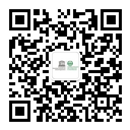Most government institutions, NGOs and other stakeholders seem to be implementing a top-down approach in their national development strategies and as such poverty persists in most rural communities in the developing countries of the Asia-Pacific and Sub-Saharan Africa regions. As such policies implemented by these various stakeholders are ineffective and have made overall poverty alleviation rather fragmented and uncoordinated and much short of dynamism is required to achieve desired results. In other words, non-participation of local authorities and communities means that community mobilisation and participation is not being viewed as both a goal of development which requires that national resources and opportunities be equitably distributed, and as a way of facilitating and energising the development effort by means of popular involvement in developmental decision making. Lack of empowerment amongst rural people leads to their vulnerability and thus most development projects tend to benefit the benefactors rather than the beneficiaries. In light of this, sustainable development is not achieved because non-participation of local people means that rural development is not self-sustaining. Therefore, local rural people play an important role in rural development because they understand their situation and problems better than the governments, aid agencies and other stakeholders. One of the biggest problems or upsets in most developing countries’ rural communities is poverty which has detrimental effects on the socio-economic lives of local people. Participation and involvement of local people at grassroots level is important in curbing this phenomenon. It is within this context that the notions of learning village/rural learning comunities becomes critical.
Accounting for more than 60 percent of the total population of the developing countries, rural areas are rich in their ecological and cultural diversity. However, the size and complexity of rural populations in these countries make it difficult to generalize about their problems or assets, though some common characteristics exist (See Table 1). For much of their existence, rural communities have relied on the wealth of natural resources found in the landscape. But in the 20th Century, great changes-technological, political and economic-have brought a profound transformation to agriculture and other renewable resource industries and to the rural communities’ dependence on them.
While such changes have yielded social benefits, they have also carried with them a cost. Today, we see small and medium-sized farms struggle in an increasingly concentrated global economy. Similarly, forest communities grapple with a change in natural resource management priorities and mounting environmental concerns. A “digital divide” threatens to exclude some rural communities from the benefits of the new information economy.Some rural communities face a drain of population, while others, particularly those with high scenic or recreational value, struggle with burgeoning populations placing new demands on ecosystems and traditional ways of life.
Despite these challenges, there is still plenty of cause for optimism. Resilience and self-determination are two traits that characterize many rural communities. For rural people, the rapid pace of change brings with it not only challenges but opportunities as well. In some ways, sustainable development aims to manage change that is inevitable, and to do it in ways that are economically sound, environmentally responsible and socially equitable. The most successful communities strive to build on local assets and abilities while adopting and adapting new ideas and technologies to the local context.
Change in rural societies is necessary and even indispensable for sustainable development not only of the emerging economies but also of the world more generally. Our planet will be a better place if the rural areas revitalize not only with a focus on human development and social justice but also in recognizing and securing their rightful place as key contributors to national and global economic development and environmental sustainability. We have to make every effort to transform the tradional villages and rural communities into learning villages so as to enable them harness the benefits of mdern technologies in both their farm and non-farm activities.
This Technical Note on “Learning Village and Rural Learning Community for Sustainable Rural Transformation” suggests a logical framework and examines the provision of, and participation in, community learning in rural areas. While developing the framework, the note considers the difficulties faced by adults in rural areas who wish to participate in learning, and how that participation can be enabled and improved. The Note goes beyond the availability of community learning funded by different international donors for rural development to encompass the availability of other public, private and voluntarily offered provision. Much of the Note is directly relevant to the recent policy declarations and announcements of the national governments of the developing countries, and in particular the contribution that community learning can make to the overall three priorities of rural transformation and development, rural engagement, and improvement in quality of life of rural people.













